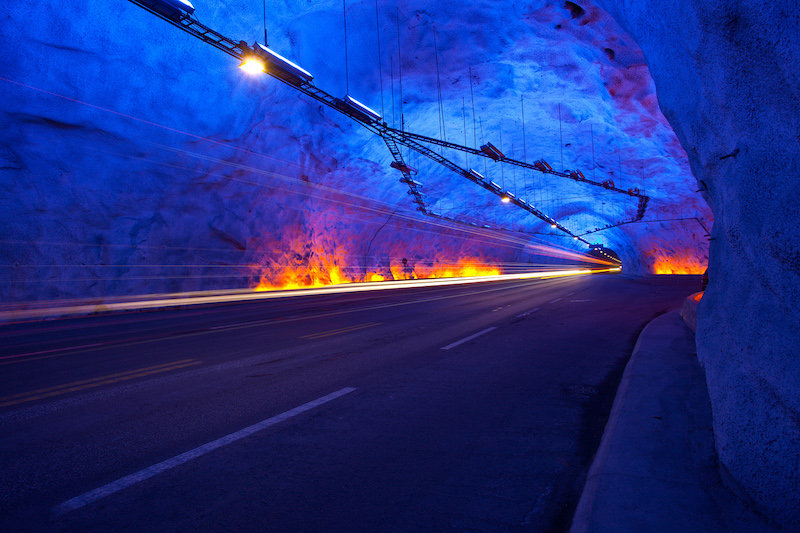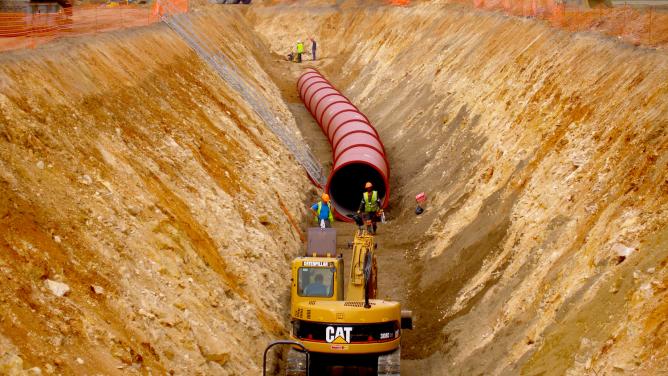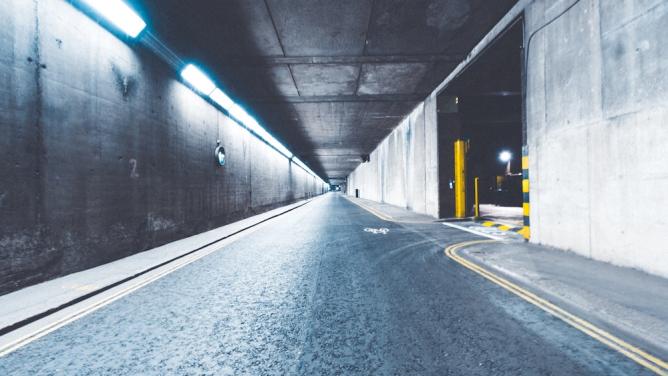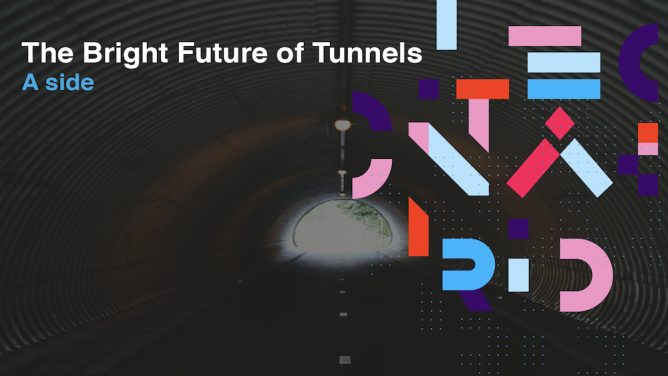The background story: slow innovation
As infrastructure, tunnels are as useful as they are complex to build. Our prehistoric ancestors used them to improve their underground habitats; the Babylonians used them for irrigation; and the Greeks and Romans were building drainage and water transport tunnels long before us, as well as communication routes, such as the superb Crypta Neapolitana located between Naples and the Phlegrean Fields, measuring 750 meters long and 4.5 meters wide. In terms of construction techniques, human strength has long played the main role. It was not until the industrial revolution and the proliferation of mining and railway tunnels that new methods emerged. In the end, the tunnel boring machine prevailed, having its heyday in the 1980s as urbanisation boomed and so too the needs for sanitation, logistics and transport networks.
The traditional tunnel boring machine and the challenges facing innovation
The tunnel boring machine is one of the most impressive machines ever invented by man. The largest measure over 100m long and can reach 19m in diameter. They can mine through rock, excavate rubble and provide support, making them both effective and versatile tools. However, the technology has barely evolved since the machine was invented, despite the incremental integration of “automation, robotisation, artificial intelligence techniques and data analysis to enable faster, steadier digging that’s safer and more environmentally friendly,” explains Marc Hasenohr, director of the Tunnel Factory at VINCI Construction.
In figures: growing needs
In 2019, 1,615 tunnel projects were under construction worldwide, including 750 in China. Before the Covid-19 crisis, 5,200km of tunnels were built each year. They represented between 6 and 7% of the infrastructure construction market, with a steady growth of 9% – double the growth of the construction market overall.
In the US, the $1.2 trillion Infrastructure Bill proposed by Joe Biden suggests significant future needs in terms of drilling, even if the Associated Builders and Contractors (ABC) is concerned about the amount budgeted for road infrastructure ($282 billion).
Elon Musk, boring champion?
As needs are growing, tunnel drilling is attracting newcomers to the game, ready to challenge the established order. And the one receiving the most media hype is undoubtedly the boss of Tesla with his Boring Company:
- Elon Musk launched the company in 2017 promising faster drilling and to cut costs by 10 times. He explained that a snail is 14 times faster than a conventional tunnel boring machine and hopes to reach this speed.
- Prufrock, the Boring Company tunnel boring machine is designed to tunnel at a speed of one mile per week – which is still four times slower than a snail.
- In 2021, Musk launched the Not a boring Competition to encourage open innovation and attract talent around his project. However, manufacturers in the sector remain sceptical, as The Boring Company is yet to show breakthrough innovation in the field.
- At the beginning of January 2022, Elon Musk’s experimental “anti-traffic” tunnels in Las Vegas appeared congested, reminding us that despite their efficiency, tunnels aren’t miracle workers…
Drones and robots!
The Boring Company is not the only company going “disruptive” in the tunnel sector. Future technology focuses on AI, robotics and drones.
Hypertunnel is one of 10 innovative companies that’s been selected as part of Leonard’s Catalyst programme. The English start-up uses machine learning, 3D printing and robotics for its brand new drilling solution. A group of semi-autonomous robots is sent into horizontal boreholes to create the structural shell of the tunnel, before the rubble is extracted by a dedicated machine!
Meanwhile, the start-up Petra hopes that its Swifty robot will replace the use of explosives, even in the toughest geological formations. Rather than making direct contact with the rock, the robot uses a torch projecting a mixture of gases at 1,000 degrees Celsius. The system initially featured a plasma torch but this was finally abandoned as it transformed the rock into lava, reducing the speed of the work. The start-up recently raised $30 million.
Some masterpieces for the road
Currently under construction is the Brenner Base Tunnel, which will soon be the longest rail tunnel in the world, linking Innsbruck (Austria) and Fortezza (Italy) over 64km. Half of the work will be done using tunnel boring machines, the other half with explosives…
In Kuala Lumpur, the SMART Tunnel is designed to both drain rainwater in a monsoon country and reduce urban traffic. As well as being the longest tunnel in Malaysia, it is the first dual purpose tunnel of its kind in the world.
The longest tunnel in the world is an aqueduct. The Delaware Aqueduct extends over 132 km and is 4m in diameter. It is one of New York City’s main water supplies.
To end this tunnel review on a more aesthetic note, the Laerdal Tunnel in Norway is a fine example of lighting. Designed to prevent drivers from dozing off during the 24.51km journey, its lighting is intended to mimic sunrise!

Source – Svein-Magne Tunli – CC
On the road to an underground city?
Apart from infrastructure issues, rolling out tunnel projects raises the question of using underground space. Architect Dominique Perrault has named this new landscape ‘groundscape’, which must no longer only be seen as hidden, humid and hostile, but as valued and enhanced. What new tunnel functions may the future hold?


